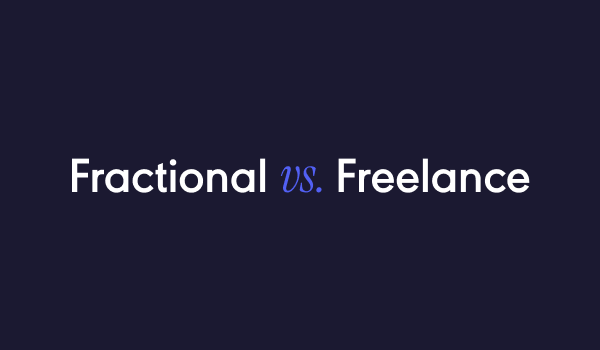As the world of work continues to evolve, so does the vocabulary we use to describe different kinds of employment. Two terms you’ve probably seen floating around—especially in the startup, creative, and consulting worlds—are fractional and freelance. While they may sound similar and both describe non-traditional work arrangements, they are not interchangeable.
So what exactly is the difference between fractional and freelance work? Let’s break it down.
1. Definition and Structure
Freelance work typically involves short-term, project-based engagements. Freelancers are usually self-employed professionals hired to complete a specific task, project, or deliverable. Once the job is done, the relationship often ends (though many freelancers build long-term client relationships).
Fractional work, on the other hand, refers to part-time or limited-capacity roles that resemble traditional employment but are spread across multiple companies. A fractional worker may act as a part-time CMO, CFO, or Head of Product, providing ongoing strategic support—just not full-time or exclusively for one employer.
Think of freelancers as specialists hired to “build the house,” and fractional workers as part-time owners who help run it.
2. Commitment and Continuity
- Freelancers are generally hired for short engagements. Their commitment is often task-based and temporary.
- Fractional workers are engaged in ongoing, usually retainer-based roles that involve consistent collaboration over time. They are embedded in the business more like a traditional team member.
3. Level of Involvement
Freelancers typically work at the execution level—designing a website, writing copy, coding a feature, etc.
Fractional professionals are more likely to work at the strategic level—guiding teams, managing budgets, setting goals, and making high-level decisions. They’re part of leadership conversations, even if they’re not around full-time.
4. Examples
Freelance:
- A UX designer hired to revamp a mobile app.
- A copywriter brought on to write a new landing page.
- A videographer creating one-off marketing videos.
Fractional:
- A fractional CFO who manages finances and fundraising for three startups.
- A fractional Head of Marketing helping a company build their first growth team.
- A fractional COO guiding operations without being on staff full-time.
5. Cost and Value
Hiring freelancers is usually a straightforward expense—you’re paying for deliverables. It’s a great solution for companies needing short-term help without the long-term commitment.
Fractional roles are often more expensive per hour, but they deliver higher strategic value. Instead of paying a full-time executive salary, companies can “fractionally” share a seasoned expert with others.
6. Why It Matters
Understanding the difference helps companies hire smarter and professionals position themselves better. Hiring a freelancer when you need strategic leadership might lead to disappointing results. Offering a fractional position to someone expecting a project-based gig can create confusion.
Final Thoughts
As businesses become more flexible and talent becomes more global, both freelance and fractional models are growing in popularity. Knowing which one is right for your needs—or how to offer your services in either way—can make all the difference.

